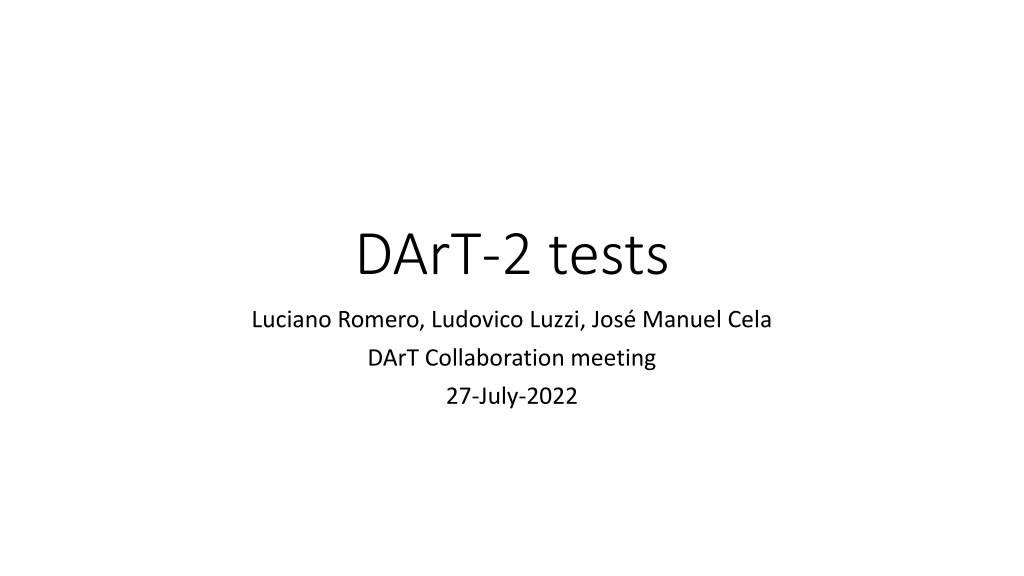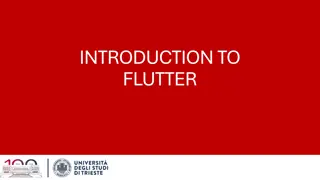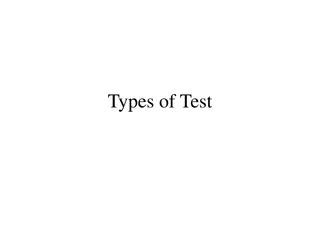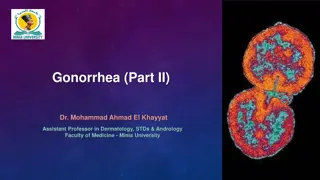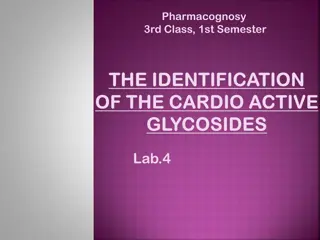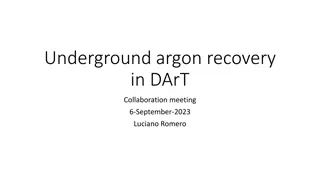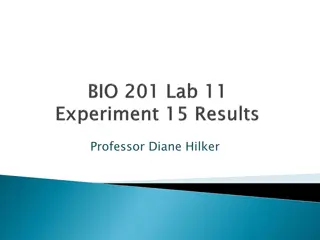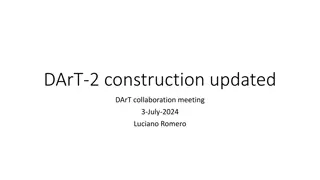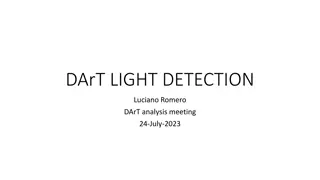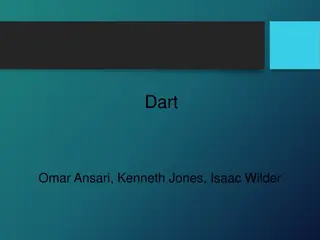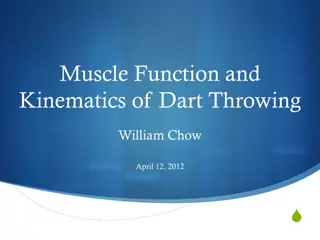DArT-2 Tests and Experiments Overview
The DArT-2 tests involve twin experiments - DArT-2 and DArT-Test, focusing on ensuring the performance of DArT-2 in studying underground argon. Various tests like electronic tests of the PDM and vacuum tests are conducted to guarantee proper operation. Challenges with vacuum sealing and solutions like conical springs are discussed for DArT-Test. The tests aim to validate the PDMs and DAQ for smooth functioning.
Download Presentation

Please find below an Image/Link to download the presentation.
The content on the website is provided AS IS for your information and personal use only. It may not be sold, licensed, or shared on other websites without obtaining consent from the author. Download presentation by click this link. If you encounter any issues during the download, it is possible that the publisher has removed the file from their server.
E N D
Presentation Transcript
DArT-2 tests Luciano Romero, Ludovico Luzzi, Jos Manuel Cela DArT Collaboration meeting 27-July-2022
DArT-2 tests DArT-2 and DArT-Test are twin experiments. DArT-Test to give information about the operation and problems of DArT-2 DArT-2 to operate in ArDM to study the underground argon The main objective of the tests described here is to guarantee the performance of DArT-2 During construction and operation Types of tests Electronic test of the PDMs Vacuum test to check leaks. Physic test 39Ar measurement Alphas measurement
Electronic tests of the PDM IV curve of the SiPM at room temperature (RT) IV curve of the SiPM at cryogenic temperature (CT) Dark current rate (CT) (noise) Finger plot of dark current (CT) (gain) Finger plot of LED driven light pulses (CT) (gain) This set of measurements guarantee the correct operation of the PDMs and of the DAQ
Electronic tests of the PDM First test already done on PDM reception One PDM rejected (#70) 9 working properly Presented on 6 of July of 2022 Second test to be done with the PDM mounted in DArT-2 To mininize connection/disconnection of PDM (risky) Light tight enclosure. No need of vacuum tightness. Vessel cooled with liquid nitrogen at atmospheric pressure Using a provisional small cryostat DArT-2 vessel filled with gaseous nitrogen or dry air. Test noise with definitive power supplies Any problem can be easily fix. Subsecuent tests to be done with DArT-2 inserted in ArDM ArDM and DArT-2 filled with cold gaseous argon ArDM and DArT-2 filled with cold liquid argon
Vacuum test of the vessel First test to be done at RT with a provisional teflon seal. At room temperature To assure the quality of the soft copper weldings Second test to be done after DArT-2 assembly. At room temperature Once the PDMs have been validated With definitive vessel seal made of 3 mm indium wire. Subsecuent cryogenic tests with DArT-2 mounted within ArDM Do not flash cool the vessel (See next slide)
Vacuum problems in DArT-Test We poured LN2 into the cryostat containing DArT-Test The entire copper vessel is cooled very fast by the LN2 Due to the high heat conductivity of the copper: 385 W/(mK) The top flange is not cooled so fast It is cooled by the vessel through the indium seal Let assume a momentary difference of temperature of 100K between flange and vessel. The maximum displacement between flange and vessel is: 17 10-6K-1x 100 K x 0.12 m = 0.2 mm Enough to weak the indium seal Use conical springs to assure the sealing of the indium wire
Physic test Vacuum and PDM tests done before. Need liquid argon inside DArT-2 Physics test are to be done within cold ArDM Not possible to do it in the current test cryostat (See next slide) Let ArDM be filled with cold argon gas To avoid time consuming filling of LAr 1 option: Condensate the liquid argon inside DArT-2 Increasing the argon pressure in DArT-2 Its no clear if the heat dissipation by gas convection allow the filling in a reasonable time. 2 option: Fill DArT-2 directly from a LAr commercial range Through the thin (CF16) gas connection
Why is not possible to use the current cryostat to do physics test The original design use SAGANA D22 ferrules to join DArT to the gas system The use of ferrules was discarded because of vacuum leaks. In current design DArT is welded directly to a CF40 flange Old design allows the coupling of DArT to the cryostat flange The ferrule goes through the 40 mm pipe of the flange. This is no longer possible with the new design 3-April-2019
